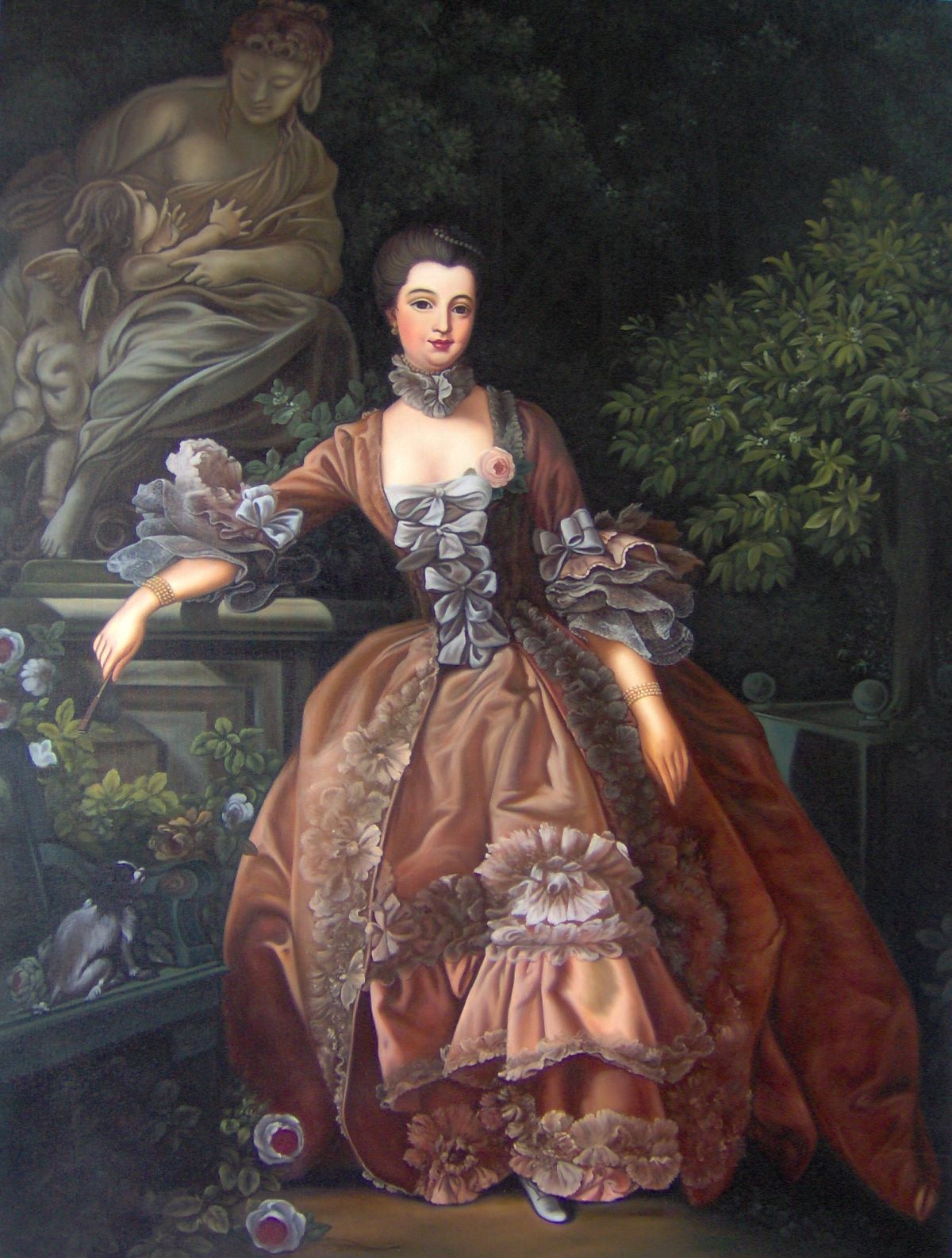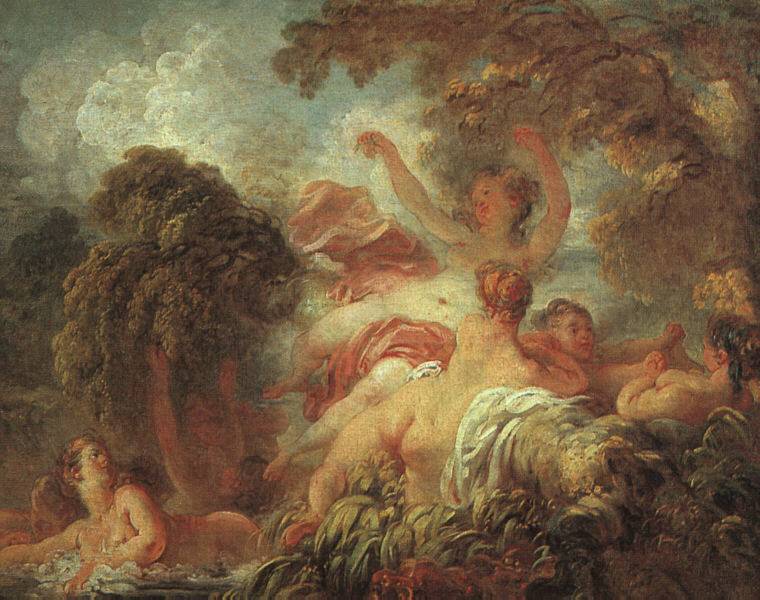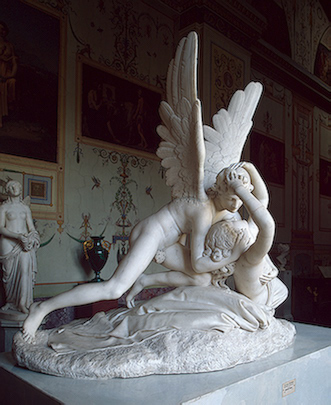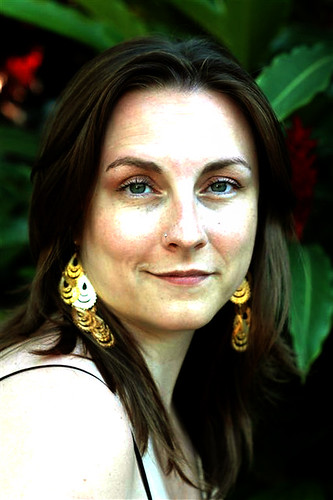Tuesday, November 28, 2006
Password Change
Great job tonight on your assignment in the blogosphere. I know it was a lot of work and a lot to learn, but the posts look great!
I decided to change the password. Don't panic though! The reason is that almost 2 years of work is on my "icon" blog and I just don't feel comfortable leaving the password out there, online, for all to see. If you want to edit your posts, you will be able to do so once Blogger allows me to move the "Humanities, etc." blog from my personal account and into a new one I made.
I appreciate your understanding on this. Thanks again for your entrepreneurial spirit! See you next week for our finals review!
Ms. Beagan
Rococo
Jessica Beagan
Art Project
Rococo Art
Rococo art is a very sensuous type of art. Rococo sculptures have been defined as the Baroque style eroticized (Sayre, 479). The Rococo art movement began in the early 18th century until the late 18th century and was said to be born of the Baroque movement (huntfor.com). During this time, new ideas about human existence were coming into play and brought optimism to many people. Rococo art objectified this optimistic feeling that people felt (huntfor.com). The word Rococo comes from the French word rocaille which refers to the small stones and shells that decorated the interiors of the grottoes. Grottoes were artificial caves that were popular in landscape design at the time (Sayre, 479). The Rococo style brought together erotic tones with the sensibility of the Baroque style. “Rococo art portrayed a world of artificiality, make-believe, and game playing…it was essentially an art of the aristocracy and emphasized what seems now to have been the unreflective and indulgent lifestyles of the aristocracy rather than piety, morality, self-discipline, reason, and heroism (all of which are found in the Baroque)” (huntfor.com). Pastel colors are characteristic of the Rococo style as well as a light-hearted mood, curving forms, and fanciful figures (huntfor.com).
The painting “Madame de Pompadour” by Francois Boucher is an example of Rococo art. Her dress is a pretty pastel color and the scene is very serene. She has an erotic sense about her as does the sculpture of the mother and child behind her. It is very light-hearted with her and her dog out in the yard just lounging about with all the gorgeous flowers around them. The whole scene is just very light and optimistic feeling like she doesn’t have a care in the world. She is very elegant and respectable and seems to be the epitome of an aristocratic woman of that time.
“The Bathers” by Jean-Honore Fragonard is another painting that is an example of Rococo art. The colors are very mellow and mostly pastel, a good example of Rococo colors. Rococo art was made to appeal to the French court. This was a sensual picture without being overly vulgar. They seem to be having fun in the picture without anything serious going on. It is very fanciful and has curving forms everywhere. It seems to portray the optimism of the people during the Industrial Revolution.
“Venus Consoling Love” is another painting by Francois Boucher that exemplifies the Rococo period. This painting is also very sensual with everyone in the picture being in the nude. This painting is outdoors surrounded by very surreal trees and flowers like most Rococo paintings. The colors are very typical of the Rococo period being very light and pastel. The goddess Venus is consoling the child Love. The cherubs are very relaxed and seem to be without a care. The scene is very serene with the puddle of water and the doves relaxing very calmly next to the people.
The statue of the “Nymph and Satyr Carousing” by Claude Michel Clodion is another example of art from the Rococo period. The purpose of this statue was to lend an erotic tone to its environment (Sayre, 479). The people in the statue are very playful and carefree. They seem to be enjoying themselves and to be very content in what they are doing and each other. They seem to be playing a game together. The statue seems to use a creative form of Greek mythology to draw its viewers into the fun. The satyr is a mythological being. The carefree attitude of the Rococo artists enables them to use fantasy in their artwork and not rely only on people and things that they see in everyday life. The forms in the statue are curving and free-flowing and not rigid in any way which is typical of Rococo art.
“The Swing” by Jean-Honore Fragonard is another typical Rococo art painting. This painting is also outdoors and in the carefree spirit of the Rococo artists. The girl seems to be thoroughly enjoying having the attention of two men and being pushed on the swing. The colors, again, are typical pretty pastel colors used in Rococo art. The sky in the background is cloudy, yet pastel blue. The statues in the yard and the woman lend the painting an erotic sense. She laughs as her shoe flies off her foot and she continues to enjoy herself. The sun shines through the clouds onto the girl and hits her dress just right to make the color stand out. The sun shining on her puts her in a spotlight of sorts and makes her the object of the painting.
These paintings totally epitomize the Rococo art style. They capture the light-heartedness and the fun-loving attitude of that time. This art was focused on the high-society, wealthy people of this period. It was not focused on morality or any other serious issue that other types of art focused on. At the end of the Rococo period, the French began to view it as “symptomatic of a wide-spread cultural decadence, epitomized by the luxurious lifestyle of the aristocracy” (Sayre, 480). Most of the paintings were people enjoying their leisure time. This would not happen as shown among the working class people. This art was not created for them and exemplified a lifestyle unknown to the common person at that time. This art was created for enjoyment and to show others enjoying their lives.

"Madame de Pompadour”
By Francois Boucher “The Bathers”
“The Bathers”
By Jean-Honore Fragonard “Venus Consoling Love”
“Venus Consoling Love”
By Francois Boucher “Nymph and Satyr Carousing”
“Nymph and Satyr Carousing”
By Claude Michel Clodion
“The Swing”
By Jean-Honore Fragonard
Website Used
http://www.huntfor.com/arthistory/c17th-mid19th/rococo.htm
Manerrism DWC & CLS

A good example of the mannerism style is Borzino’s “The Exposure of Luxury.” The center characters, Venus and her son Cupid are dramatically lit. The manneristic distortion is seen in the distance between Cupid’s head and shoulder. In the real world this would make his neck a foot long. The picture has a host of participants. The upper portion of the painting has Time and Truth parting a curtain allowing us to view the main portion of the picture. Cererally other charaters circle the center pair. This painting has many of the key factors to be of the





Polidro Da Caravaggio developed a very individual style after fleeing Rome while it was being ravaged by Charles V’s army. Caravaggio is known for a very monochrome style, experimenting with different shades of a single color. In “Nativity” we can see multi tones of the blue in the sky, and of the brown of the earth. In contrast to the muted blues and browns his central character stands out a vivid red robe, which draws our attention to the brightly lit white cloth she holds over the baby. The baby itself is distorted, its head is too big and body too thin. The picture is somewhat crowded in the manneristic style, but compared to others it is somewhat reserved.
Mannerism was born out the struggles of being concurred by Charles V who was not very found of art, particularly Italian art. He also took away the independent states in Italy, removing the autonomy of the people. Mannerism is the in between period from the death of Raphael, to Barogue movement. An interesting tidbit about this period was the beginning of archaeology. Artists could now work from actual pieces of the past instead using their imaginations when it came to classical representation. The art of mannerism had a sinister or evil connotation, where the preceding Renaissance was graceful and angelic.
Bibliography:
Geddy J. Paul Trust. The Geddy Foudations http://www.getty.edu/
Art History 101. Division of the New York Times Company. 2002.
The Renaissance
The Renaissance was not some quick change. It was a long period that went through many stages. During the early renaissance, “the population decrease caused by the plague led to an economic depression.” (http://www.learner.org/exhibits/renaissance/middleages.html) Economic hardship spread throughout the community and it affected everybody. After the effects of the plague decreased, the population began to grow and it demanded more goods and services which made a new middle class emerge. “As the fortunes of merchants, bankers, and trades people improved, they had more than enough money to meet their basic needs for food, clothing, and shelter.” (http://www.learner.org/exhibits/renaissance/middleages_sub)
They began this need to want to upgrade everything they had. Their education system improved and it became apparent that the, “the study of classical languages, literature, history, and philosophy-what we call humanities” was becoming important. (Sayre 455) The Renaissance was a time of growth. “Also, and perhaps most importantly, the Renaissance was an age in which artistic, social, scientific, and political thought turned in new directions.” (http://www.learner.org/exhibits/renaissance/)
The renaissance was a revival period for art when people started to gain interest in arts and sciences again after being lost for so many years. They were thought to believe that they would be doomed to darkness if they didn’t take their opportunity to learn. When it comes to the actual art that was created during the Renaissance period, it is very distinctive. It totally went from the original pattern and model of what art was to a more realistic nature. The people in the paintings became more realistic and held expressions and showed emotions. Before the renaissance they were stiff and expressionless. Renaissance art also represents the rebirth of naturalism in its art. “For instance, there was a greater emphasis on anatomically correct human bodies.” (http://www.gabc.org/pastor/report02.htm) Before this time the human body was always covered. Michelangelo who is a famous Renaissance painter went against the normal traditions. He uncovered the body and made it so realistic. Before this time the human body was sinful and looked upon as discussing. During the renaissance it slowly began to be uncovered and looked upon as a beautiful thing. Also, when artists showed objects they started the use of shadows upon the ground. Depth became very apparent. Painters started using little tricks like “vanishing points.” “This new depth perspective represented a dramatic change from the flat scenes.” (http://www.gabc.org/pastor/report02.htm) With a combination of all these new techniques Rennaissance art was created.
-mona-lisa.jpg)
The Mona Lisa is one of Leonardo Da Vinci’s most celebrated paintings. The actual history of the painting is shrouded in mystery. It is speculated that it was painted in Florence between 1503 and 1506 and is thought to be of Lisa Gherardini, wife of a Florentine cloth merchant named Francesco del Giocondo. The portrait may have been painted to mark one of two events, either when Francesco del Giocondo and his wife bought their own house in 1503, or when their second son, Andrea, was born in December 1502 after the death of a daughter in 1499. The dark veil that covers Mona Lisa's hair is sometimes considered a mourning veil. The Mona Lisa is the earliest Italian portrait to focus so closely on the sitter in a half-length portrait and is painted to a realistic scale. Such aspects of the work as the three-quarter view of a figure against a landscape, the architectural setting, and the hands joined in the foreground were already being used in Flemish portraiture of the second half of the 15th century, particularly in the works of Hans Memling. However, the spacial coherence, the atmospheric illusionism, the monumentality, and equilibrium of the work were all new. This technique was also new to Leonardo’s style, because none of his other portraits up until this time were painted with these characteristics. (louvre.fr)

Painted by Veronese between 1562 and 1563, this giant canvas once adorned the refectory wall of the Benedictine monastery of San Giorgio Maggiore, Venice. The theme is of the Marriage at Cana, from the Gospel of St. John. Veronese did not follow the biblical text exactly but instead borrowed from Arentino's version of St. John and transformed the scene into a lavish banquet, calling to mind the extravagant Venetian lifestyle. The work remains deeply religious, as can be seen from the composition. “The central vertical cuts through the body of Christ; the central horizontal lies on the balustrade: above Christ, the theme of the Eucharist is evoked by the butchering of the lamb; below Christ, the hourglass on the table and the dog chewing a bone, the symbol of death, evoke the destiny of mankind” (louvre.fr). The extravagance of Venice is seen through the beauty of the women, all dressed superbly and in jewels. The requirements concerning the pigments to be used imposed by Veronese's patrons here remind us how important color was for Venetian artists.
 Painted between 1485-1486, The Birth Of Venus, became one of Sandro Botticelli’s most celebrated works. The piece was painted for the villa of Lorenzo di Pierfrancesco de' Medici at Castello, onto canvas, which was a less expensive painting surface than the wooden panels used in church and court pictures. Canvas is known to have been the preferred material for the painting of non-religious and pagan subjects that were sometimes commissioned to decorate country villas in 15th-century Italy. During the Renaissance, when the Italians tried to recapture the glory of Rome, classical myths became very popular. The patron who commissioned the Botticelli painting for his country villa was a member of the rich and powerful family of the Medici. Either he himself, or one of his educated friends, probably explained to the painter what was known of the way the ancients had represented Venus rising from the sea. “To these scholars the story of her birth was the symbol of mystery through which the divine message of beauty came into the world.”(puc-rio.br). In the painting, Venus has emerged from the sea on a shell which is driven to the shore by flying wind-gods amidst a shower of roses. As she is about to step on to the land, one of the Hours or Nymphs receives her with a purple cloak. The picture forms a perfectly harmonious pattern. “The graceful movements and melodious lines of his composition recall the Gothic tradition of Ghiberti and Fra Angelico, perhaps even the art of the fourteenth century - works such as Simone Martini's Annunciation.” (puc-rio.br) Botticelli's Venus is so beautiful that we do not notice the unnatural length of her neck, the steep fall of her shoulders and the queer way her left arm is hinged to the body. “These liberties which Botticelli took with nature in order to achieve a graceful outline add to the beauty and harmony of the design because they enhance the impression of an infinitely tender and delicate being, wafted to our shores as a gift from Heaven.” (puc-rio.br)
Painted between 1485-1486, The Birth Of Venus, became one of Sandro Botticelli’s most celebrated works. The piece was painted for the villa of Lorenzo di Pierfrancesco de' Medici at Castello, onto canvas, which was a less expensive painting surface than the wooden panels used in church and court pictures. Canvas is known to have been the preferred material for the painting of non-religious and pagan subjects that were sometimes commissioned to decorate country villas in 15th-century Italy. During the Renaissance, when the Italians tried to recapture the glory of Rome, classical myths became very popular. The patron who commissioned the Botticelli painting for his country villa was a member of the rich and powerful family of the Medici. Either he himself, or one of his educated friends, probably explained to the painter what was known of the way the ancients had represented Venus rising from the sea. “To these scholars the story of her birth was the symbol of mystery through which the divine message of beauty came into the world.”(puc-rio.br). In the painting, Venus has emerged from the sea on a shell which is driven to the shore by flying wind-gods amidst a shower of roses. As she is about to step on to the land, one of the Hours or Nymphs receives her with a purple cloak. The picture forms a perfectly harmonious pattern. “The graceful movements and melodious lines of his composition recall the Gothic tradition of Ghiberti and Fra Angelico, perhaps even the art of the fourteenth century - works such as Simone Martini's Annunciation.” (puc-rio.br) Botticelli's Venus is so beautiful that we do not notice the unnatural length of her neck, the steep fall of her shoulders and the queer way her left arm is hinged to the body. “These liberties which Botticelli took with nature in order to achieve a graceful outline add to the beauty and harmony of the design because they enhance the impression of an infinitely tender and delicate being, wafted to our shores as a gift from Heaven.” (puc-rio.br)
The original sculpture of David by Michelangelo was begun in 1501, and by 1504 the David sculpture was placed outside the Palazzo Vecchio. Michelangelo was commissioned to create the marble David sculpture by the Arte della Lana (Guild of Wool Merchant), who were responsible for the upkeep and the decoration of the Cathedral in Florence. For this purpose, he was given a block of marble which Agostino di Duccio had already attempted to fashion forty years previously, perhaps with the same subject in mind. (marbleclassics.com) David is known as the most recognizable statue in the history of art. It has become regarded as a symbol both of strength and youthful human beauty. The 17 ft. statue portrays the biblical King David at the moment he decides to battle Goliath. Instead of being shown victorious over a foe much larger than he, David looks tense and ready for combat. His veins bulge out of his lowered right hand and the twist of his body effectively conveys to the viewer the feeling that he is in motion. The statue is meant to show David after he has made the decision to fight Goliath but before the battle has actually taken place. It is a representation of the moment between conscious choice and conscious action.(graphics.stanford.edu/projects/mich/)

This version of the Crucifixion done by Giovanni Bellini, in 1460, is marked by him adopting a new style and breaking away from the heavy influence of his brother-in-law Andrea Mantegna. Set on a domed mound, the Cross stands out against a landscape that includes, on the right, the walls of a city. The dead Christ is flanked by his mother and St John. On the left, the Virgin in her blue cloak is shown full face, one arm extended with the hand open. On the right St John is turned towards Christ, hands clasped; his mouth is slightly open, as if in a sigh.
By: Stefanie and Vika
Dolly and Dana
This photo is the home of Thomas jefferson. It is a classical picture of neoclassica by the dome on top and the border arount the home. This type of art is now used as a theme for the official Federal style. They


Marat Assassinated 1793 (Oil on canvas) this picture portrays the death of Marat, a fallen hero of the Revolution. (www.art.com)
The formal quality being that it is extremely detailed. For example the note in his hand is clearly visible in writing and it has smudged finger prints on the note. It also shows what obviously happened in the picture. (Apparent suicide) The pen in his hand also shows that he was the one that wrote the note. The bright red color in the bathtub also suggests that he has committed suicide also.
The detail in the picture is very clear for example the box that he identifies as this painting is his. The folds in the blanket are very natural looking and the deathly expression in his face shows that he was not happy.
 Ferdinand IV King of Naples, and His Family. Angelica Kauffmann (art.com)
Ferdinand IV King of Naples, and His Family. Angelica Kauffmann (art.com)The detail of each individual is amazingly accurate. The color is bright and vivid. There is a brightness shining upon them which creates deep shadows that show the depth and character of each.
 Antonio Canova, Cupid and Psyche, (artlex.com)
Antonio Canova, Cupid and Psyche, (artlex.com)Neoclassic artists used classical forms to express their ideas about courage, sacrifice, and love of country. (artlex.com)
 La Baigneuse. Jean-Auguste Dominique Ingres (artwork.barewall.com)
La Baigneuse. Jean-Auguste Dominique Ingres (artwork.barewall.com)